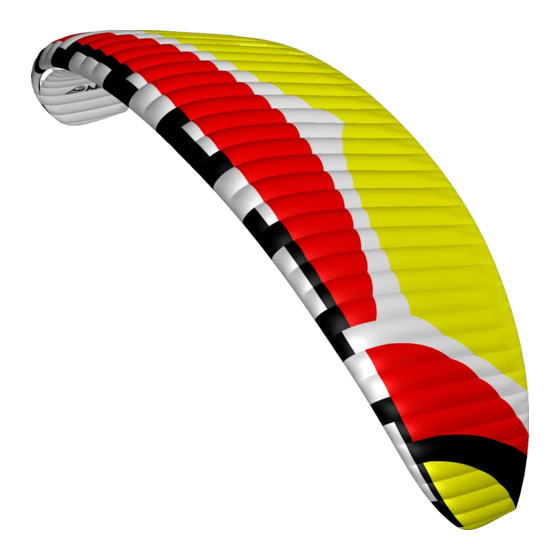Dudek Nemo 4 Series Manual - Página 10
Procurar online ou descarregar pdf Manual para Aeronaves Dudek Nemo 4 Series. Dudek Nemo 4 Series 20 páginas.

From now on you should steer the paraglider facing forward,
without looking back over your shoulder (when the wing is low
behind you, turning can cause some lines to get in the propeller).
Still, possible fall on your back and damaging the propeller is
dangerous (and costly!) so it should be avoided at any price, even
that of some damaged lines!
During take-off, when you feel the strain on both risers to be equal,
make sure the canopy is overhead, open up full power and lean
back to counter the engine thrust, so that it can push you forward
rather than towards the ground. The best option is not to use the
brakes, allowing the paraglider to rise as it was laid out. If it starts to
swerve from its course, just pull the opposite riser and run under
the centre of the wing while preserving starting direction. If the
wind suddenly drops, give a stronger pull on the risers. If the
paraglider falls to one side or back too far to be lifted again - kill
the engine, interrupt launch and check the conditions once again.
As the wing rises, the forces grow lighter and it should stabilise
above your head without overshooting. This is the best moment to
check if it is inflated well and the lines are not tangled, but do so
neither stopping nor turning. Once you feel the forces on the risers
decrease, run faster and let go of the risers. See if there is already
any opposition on the brakes and, if necessary, use them to correct
direction or to increase lift at take-off.
Remember:
If the cage of your power unit is not stiff enough, the risers
<
strained during launch can deform it to the extent of collision
with the propeller. Before giving it full power, see that the cage
does not catch any lines.
Any brake operation (or steering inputs in general) should be
<
smooth and gentle.
Do not try to take off until you have your wing overhead.
<
Hitting power before that can cause dangerous oscillations.
Do not sit in the harness until you are sure you are flying!
<
The faster the trim setting is, the more brake input is required to
<
take off.
The lower the hangpoints of your power unit are, the easier is
<
the launch.
Reverse launch in strong wind
Reverse launch can be executed holding in one hand both A risers
and one brake, with throttle and the second brake in the other
launch
10
